How did you become interested in Indian music?
- During 1967 I was living in Haight-Ashbury when Ravi Shankar gave his performance at the Monterey Pop Festival. The next morning, the Grateful Dead blared the reel-to-reel tape of that performance out of their window on Haight Street. A large crowd formed in the street to listen to it, including me. As far as I can remember, that was the 1st time I ever heard Indian classical music. A few weeks later Linda Ronstadt and Kenny Edwards of The Stone Ponies, who were friends of my roommate, brought a sitar to our apartment. Kenny was trying to learn how to play it, à la George Harrison. There was a record shop in the South of Market neighborhood which carried a few Indian records for $2.99 each, and I bought LP’s of Sharan Rani playing Lalit & Kaunsi Kanara, Panna Lal Ghosh’s Shri & Yaman, Pt. Ramnarain’s Patdeep with a dhun in Khammaj, and the Ali Brothers singing Kalavati & Gawoti. I listened to those recordings over and over, which is why I still remember them today. That was my introduction to Indian classical music.
What made you want to devote yourself to Indian music?
- In the late 60’s I lived at Mt. Shasta. I became interested in bansuri and met a disciple of Panna Lal Ghosh’s son-in-law Devindra Murdeshwar who showed me the basics of bansuri playing and manufacture. At that time I had friends who were studying at the Ali Akbar College of Music in Berkeley and they gave me material to practice. In 1971 I began studying full time with G. S. Sachdev and Ust. Ali Akbar Khan at AACM. During the first 5 years or so of that study, I had the time to practice three or four hours a day and developed the basic knowledge of flute music and technique. After about 5 years of that, I realized how much I didn’t know and had to make a decision as to whether or not I would put in the time and effort to complete the task. Obviously, I decided to go ahead, but now almost 50 years into it, I know it will never be complete. The more you know, the more you see needs to be done. I’m still making progress, though. Daily riaz is so much a part of my life I don’t feel right if I don’t practice.
- In 1975 I found the bamboo on Kauai which I have used to make bamboo flutes ever since. It was not native to Hawaii but it was brought by the ancient Polynesians who used it for a variety of purposes. They planted the stands of bamboo I use more than 1,000 years ago. As of right now, 2018, I have made about 41,000 flutes. About 32,000 of those were made from the bamboo I cut myself in Hanakapiai, a valley on Kauai. About 1,000 were made from the same species from Fiji, another 6,000 from a related species imported to me from Assam, with the rest being from various sources. Good flute bamboo has long nodes with a meter or so between the knots. Hanakapiai is my home-away-from-home and I feel a deep connection to it. I’ve spent about a year of my life there cutting bamboo. Now I’m getting old to carry 40-pound backpacks of green bamboo, but I’m still there in spirit. Today I make a number of different kinds of flutes, and several Broadway musicals such as The Lion King and Miss Saigon use my flutes in their orchestras. In flutemaking I’ve branched out somewhat away from Indian music, but I still only perform classical and light classical pieces. For myself, I’m not interested in fusion, but I make flutes for many fusion players.
Do you also teach this oral tradition and feel a responsibility to help others to learn and sustain the musical form for the future?
- After I had studied for about 20 years, I began teaching. Here in Silicon Valley, there is a large population of South Asians, and most of my students are Indian, with the occasional Pakistani and Afghan. I teach in the traditional way, by ear, and with endless repetitions. I begin with easy material and gradually move to more difficult pieces and rags. On bansuri, we play the Komal notes – the flatted notes – by partially opening the holes, and that is a difficult technique to master. I try to establish a respect for classicism in my students. Many people today fail to distinguish between the rag and the scale used for the rag. That is to say, they simply regard the rag as a scale or mode. In truth, every rag has its own vocabulary and grammar, and people don’t want to put the practice in to master that. Each rag has been defined and refined by generations of master musicians who played that rag and has hidden nuances which must be learned from someone who is proficient in the tradition. Indian music has been cheapened by people who simply reduce the rag to a scale.
How is teaching itself also valuable to you as a performing artist?
- Teaching music is a vast experiment in cognitive science. Each student learns differently. A teacher has to try to find the method or material which will allow the individual student to progress. In that way, you have to be your own best critic. A common-sense constant reappraisal of whatever you’re playing and teaching is constantly in order. There are at least two different kinds of practice. The first is improving and mastering the material in which one is already proficient and the second is trying to assimilate new skills and material. There’s always something else to work on. The skill of self-evaluation is critical for the student, teacher, and performer.
What are some of the insights you have gained from daily practice and the betterment of your craft both as an artisan and performer/teacher?
- The thing I tell my students over and over is, “When you get the piece right, that’s the beginning of your practice, not the end of it.” However well one plays, one can always make it better. With flutemaking, the most important factor is respect for the bamboo itself. The flutemaker cannot simply impose his will on the bamboo. I have learned to pay close attention to each piece of bamboo in order to bring the best flute out of it. Probably the first 1,000 flutes I made, around 1970-72, weren’t very good. Then I got the hang of it. Bamboo is an irregular substance. It’s not like a pipe or a plastic tube. Those irregularities can ruin a flute, but they can also enhance it if handled well. No two flutes are exactly alike, just like people. The principles of acoustic science must guide flutemaking, yet at the heart, it remains an art.
Have you noticed changes in the audiences for the music or in the students teach over the last few years or more?
- Teaching music is a vast experiment in cognitive science. Each student learns differently. A teacher has to try to find the method or material which will allow the individual student to progress. In that way, you have to be your own best critic. A common-sense constant reappraisal of whatever you’re playing and teaching is constantly in order. There are at least two different kinds of practice. The first is improving and mastering the material in which one is already proficient and the second is trying to assimilate new skills and material. There’s always something else to work on. The skill of self-evaluation is critical for the student, teacher, and performer.
The amazing voice of Pta (Panditain) Gargee Siddhanta Dutta enthralled the audience at the Burnaby Hall on the 24th of June 2018 , during the performance organised by Pandit Jasraj School of Music Foundation (PJSOMF). Dressed in a beautiful silk saree, Pta Gargee was a picture of calm, serene and sophistication on the stage. She started off with Raag Yaman in Vilambit Ektaal with a short and sweet alaap and proceeded to elaborate the raag in a very intricate way. Later she presented a Hanuman Bhajan in Raag Jog which was greatly appreciated by one and all. Many times, classical musicians are so involved in technique that the emotional aspect of the raag is lost but Pta Gargee, with her skillful technique, was par excellence when it came to the expression of the devotional aspect of the composition. Her presentation was soul stirring and she was completely involved with the spirit of the song. Her second devotional song Shree Krishna Chandra Ne was heavenly and filled with a lot of “Bhav” (emotion) and was a wonderful tribute to her Guruji Pandit Jasraj ji. Mrs. Nina Budhhadev of Vois Crèatives, The Bandish Network, India Currents Magazine, and a well-known music and art personality in Vancouver had this to say about the concert “I was touched by the Hanuman Ji Ki Rachna in Raag Jog, one of my most adored raags. In the second half the bhajan, ‘Shri Krishna Chandra Ne’ reached me. As always, the PJSOMF evening was warm, welcoming and hospitable.” The compositions that followed were brilliant and rendered beautifully by Pta Gargee.
Ms. Anjali Joshi, a multitalented musician from Seattle who plays a number of musical instruments like the harmonium, santoor, violin and numerous others, provided exemplary melodious support to Pta Gargee while our own Vancouver based tabla exponent Mr. Amarjeet Singh accompanied and provided outstanding support throughout the entire concert. Amarjeet imparts knowledge of this percussion instrument to students of classical Indian music through The Naad Foundation. I have watched and heard Amarjeet Singh a number of times in Vancouver, but this was among his best performances. Pta Gargee’s young daughter was very comfortable providing vocal support to her mother. Mr. Krishna Teja of Pandit Jasraj School of Music, with his deep voice, was an excellent addition as a vocal support to Pta Gargee. The artists were introduced by Mr. Rohan Khadilkar and the entire evening was filled with an excellent selection of rhythms and raags. The last composition in Bhairavi was a perfect finale to the entire musical evening. Pandit Jasraj school of Music Foundation has an excellent group of musicians and music lovers who work relentlessly to promote Indian classical music in Vancouver.
Photos provided by Shishir Gopinath
]]>

In this full house event I was in the front row seat with no other than Yosof Hakimi from Aaj magazine. Indian classical dance and music is a science with technique, style, and rooted in history.
In North America with its growing multicultural herd we are making our way integrating the history we left behind. What a beautiful way to share this joy of dance, drama, music in Indian classical dance. At times I felt “Krishna” on stage, and the Tandav “Shiva” fill the room in the performers who danced with shakti that only comes from a place of deep worship. For me the body is a temple that is the instrument like most of these dancers I become one with the dance.

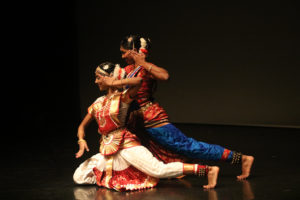
The message I went home with was ‘we need more of this’ and a sense of welcome was the other message where the group invited everyone in to support them. The night was illuminated by the fire of tranquil dance performances.
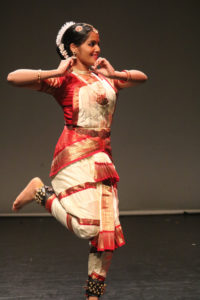
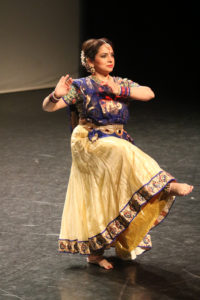
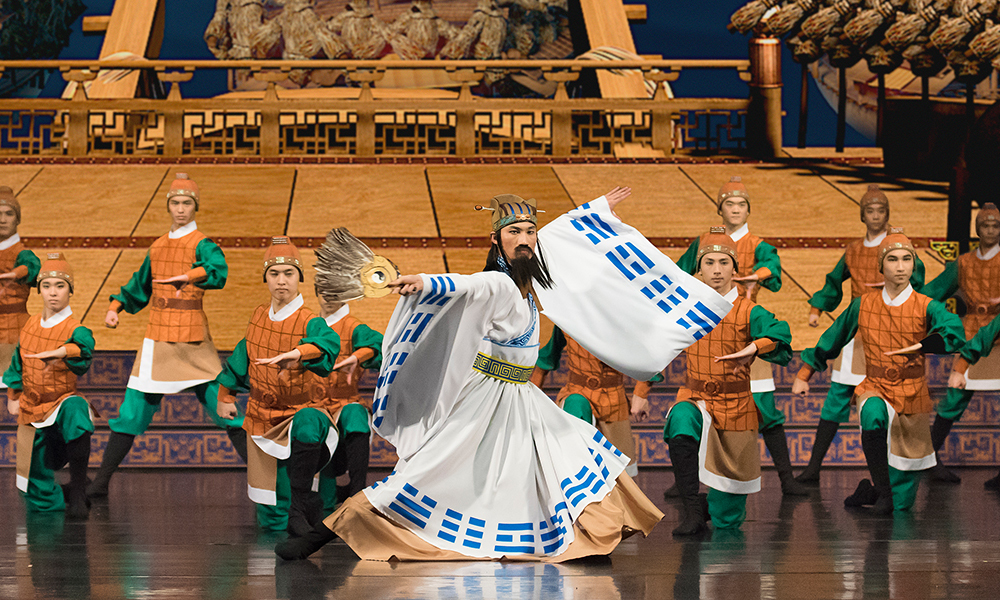
What is it about this group of artists that has captivated so many theatregoers worldwide—transcending culture, race, and ethnicity? And why are Chinese people flying out of mainland China to Taiwan and other locations in order to see the show?
‘The highest realm in arts’
“Demonstrating the highest realm in arts, Shen Yun inspires the performing arts world,” said Chi Cao, principal dancer with the Birmingham Royal Ballet and lead actor in “Mao’s Last Dancer.”
Certainly, Shen Yun draws top artists from around the world including winners of international competitions in classical Chinese dance and music. Its production charms showgoers through superb dance and a unique orchestra highlighting Chinese melodies in a seamless combination of Eastern and Western instruments.
In addition, the all-new program every year is a visual feast showcasing exquisite handmade costumes and state-of-the-art technological innovations. This includes groundbreaking animated backdrops that extend the stage and transport theatregoers into different realms, depicting the natural world as well as ancient Chinese art, such as classical Chinese gardens and heavenly scenes often portrayed in Buddhist paintings.
Contributing to the extraordinary performance is not only the artists’ and the entire team’s talent and vigorous devotion to excellence, but their deep belief in and embodiment of Shen Yun’s mission.
Inner beauty and purity
Established in 2006, New York-based Shen Yun was founded on the mission of reviving the authentic traditional culture of China through classical Chinese dance and music.
The company’s dancers train many hours a day, emphasizing form, bearing, and technical skills. The concept of bearing is particularly important in classical Chinese dance. It is the element that allows the performer to express inner feelings through movement, where the nobler the dancer’s character, the more outstanding the dance.
As such, Shen Yun performers not only devote themselves to practicing technique but also to refining their personal character through what is called self-cultivation in traditional Chinese culture. It is rooted in the ancient Chinese belief that to create true art, there must first be inner beauty and purity.
‘The beauty of divine beings dancing’
The name Shen Yun in fact means “the beauty of divine beings dancing.” It reflects the company’s aspiration to share with audiences the ancient Chinese belief that the arts are a gift to humankind from heaven.
It also echoes the ideals of the moral and spiritual values that define the heart and soul of traditional Chinese culture, such as benevolence and justice, propriety and wisdom, respect for and faith in heaven, and divine retribution.
These are principles that have largely been lost in China following decades of communist repression. Indeed, Shen Yun cannot be seen in mainland China, where its mission to revive the age-old spiritual essence of traditional China is not permitted in the officially atheistic country.
‘Go back and see it six times’
For its part, Shen Yun masterfully presents the noble values and splendid artistry of China’s ancient culture in their authentic form, rooted in 5,000 years of civilization. The effects are deeply felt by audience members.
“There is no word to describe it. … If I had to, the words might be ‘divine,’ ‘reborn,’ and ‘hope,’” said cello virtuoso Christine Walevska.
“The human spirit, the dignity, the power, the love of those people was astounding. … This is the profound quintessential end of entertainment. There is nothing beyond this, nothing,” said former producer Jim Crill.
“I have reviewed over 3,000 shows, none can compare to what I saw tonight. … Five stars! The top!” said renowned Broadway critic Richard Connema. “Go back and see it six times.”
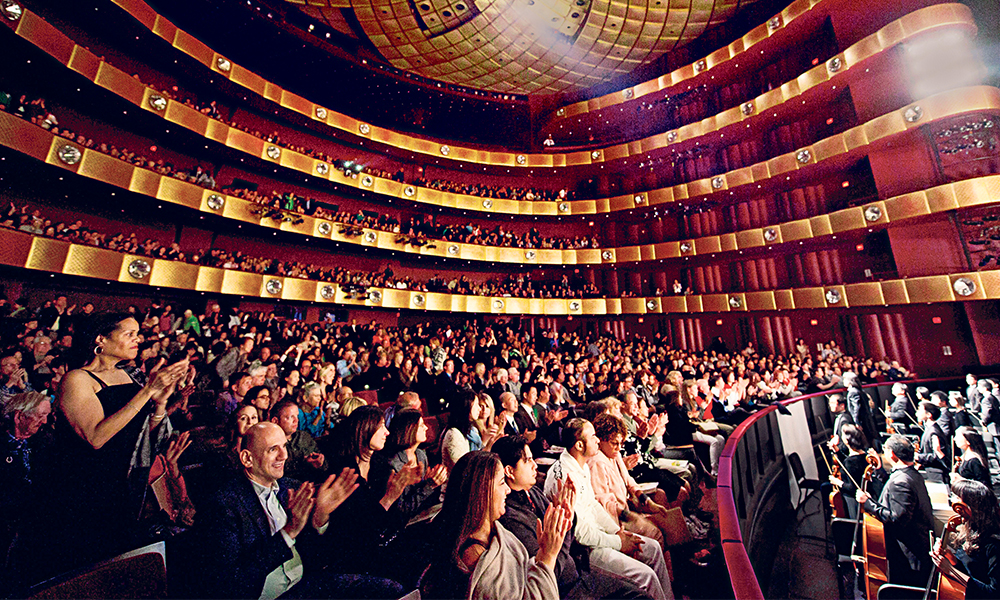
Shen Yun returns to the Queen Elizabeth Theatre in Vancouver March 23–25 for its 11th season. For more information, please visit ShenYun.com/Van
]]>“I’ve always had this idea in my head to put colorful paint, fabrics, symbols and stones together. It wasn’t until that trip I started talking about it to a friend. We had just seen a ton of amazing artwork. It was then I was asked – why aren’t you doing it?”
With a busy career in radio, television and DJing events – time was the main excuse for Kuljeet Kaila. “I thought about it lots after that trip and tried to eliminate all the excuses. I must have really put it out there.” Shortly after that trip, Kuljeet was laid off from a radio job and suddenly had more time and less excuses. “I got a lovely gift card from that same friend to buy art supplies and just started. I soon found it to be the only thing I could do where I didn’t have to worry about making mistakes or missing deadlines – it was so freeing.”
Putting it all on canvas also proved to be very healing for Kuljeet, who then started researching the meaning of different colours, stones, symbols and even feng shui. Kuljeet also enlisted the help of a couple of local energy healers to learn more. “Soon, I was getting calls from their clients to create pieces for their homes and offices; and some of the work I was doing was very much in line with feng shui. It all started to make sense – everything has meaning.”
It has turned into a journey of learning and finding purpose on many levels for this artist. Kuljeet’s artwork is featured on a new website with definitions of each piece, but the healing power of art has inspired Kuljeet to use it to help heal others.
After spending close to 20 years in media, travelling all over the world, covering various stories, producing documentaries and learning people’s stories, there were 2 things that always stuck with her.
“I will never forget meeting families of terminally ill children. It broke my heart in so many ways and although there isn’t much you can do to help with the outcome, you can help along the way – be it paying bills or assisting with outings. I decided I would sell my artwork to help a couple of causes including this one locally.”
The other cause near and dear to Kuljeet’s heart are orphanages in India that take in girls who are given up, abandoned, and in some cases dumped at birth.
“It was probably one of the harshest stories I have ever had to cover and it always stuck with me. I was horrified that a family would do this and then also amazed by those who gave them a second chance.”
Kuljeet will be visiting the Unique Home for Girls in India next spring, and is hoping the artwork will help generate a significant donation.
Some of Kuljeet’s work will be showcased at events and inside local temples and restaurants. With no set prices, Kuljeet is hoping people will bid and donate what they can if they like a piece. “I also get requests to do custom pieces for homes or offices with certain colors and symbols, so I am open to that too.”
To view the artwork and read more, visit www.customizedartwork.com or find Kuljeet’s art page on Facebook.
]]>